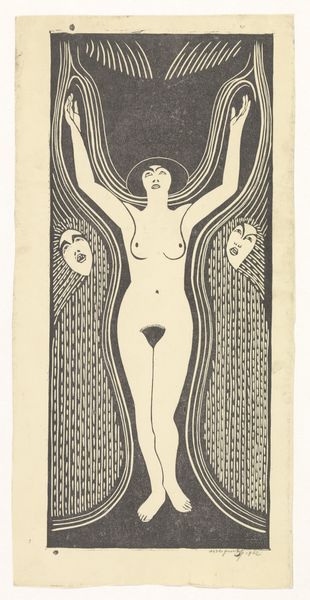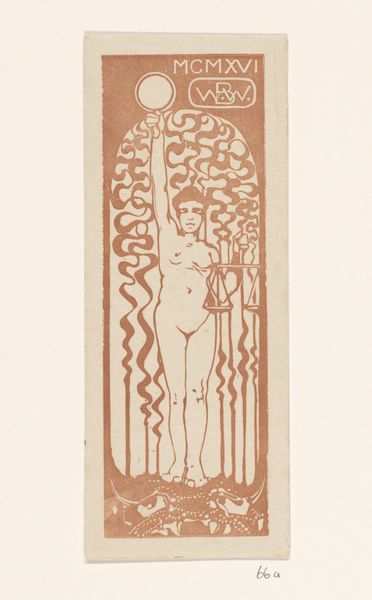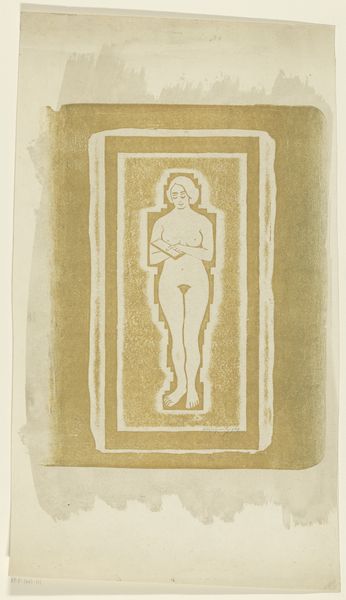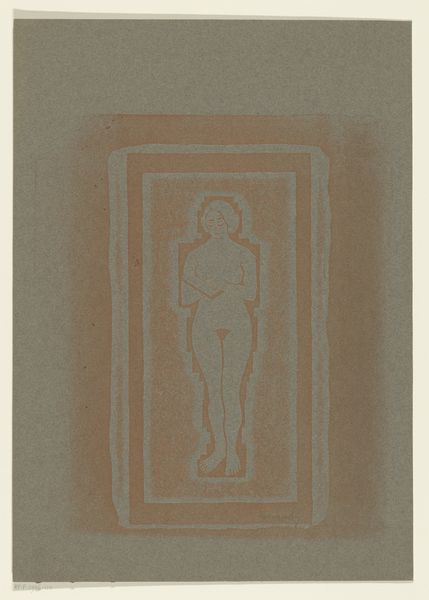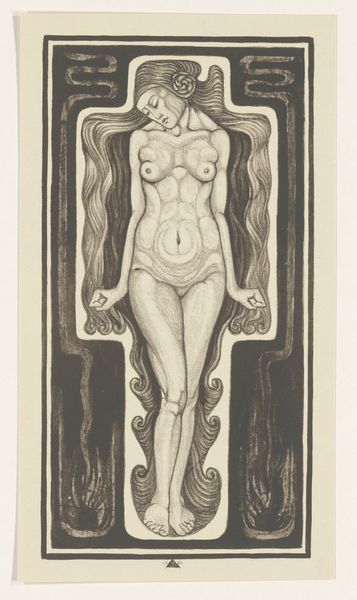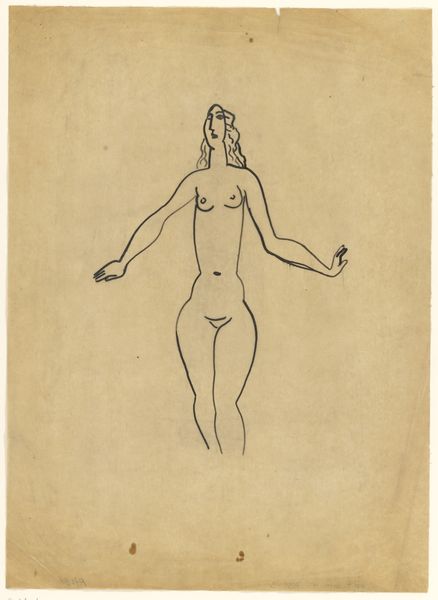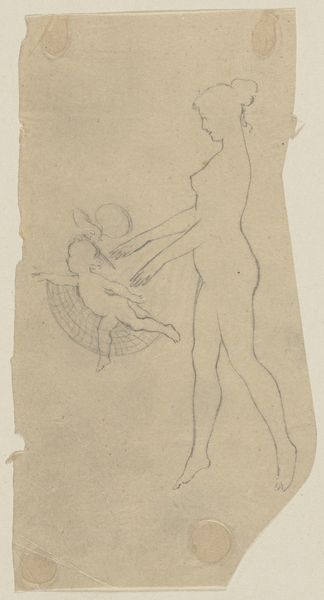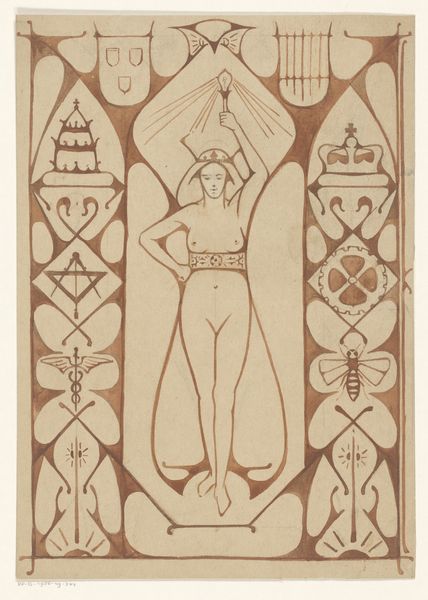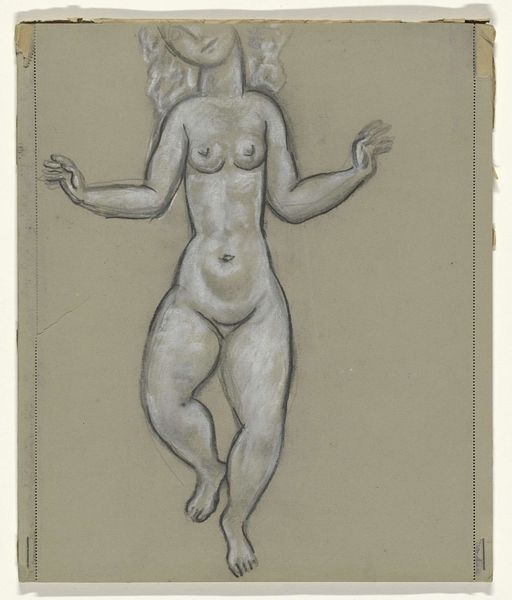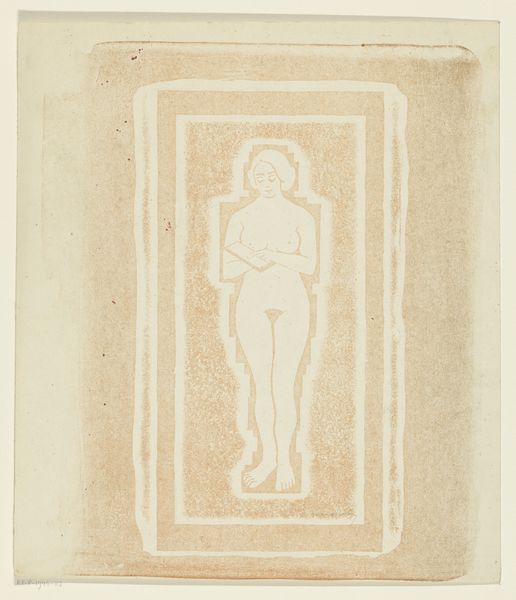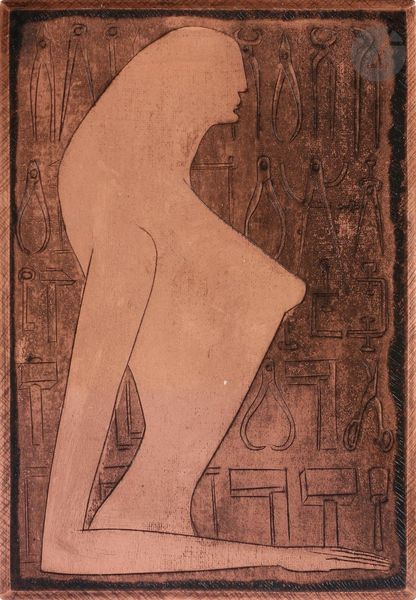
Dimensions: height 351 mm, width 172 mm
Copyright: Rijks Museum: Open Domain
Editor: This is Samuel Jessurun de Mesquita's "Standing Nude Woman with Raised Arms," a linocut from 1922, held in the Rijksmuseum. The stark contrasts immediately grab you. It’s like a goddess emerging from a patterned underworld. What do you see in this piece beyond its aesthetic appeal? Curator: It’s fascinating to consider this work in the context of the early 20th century and the resurgence of interest in the "primitive." Mesquita, influenced by Art Nouveau and Symbolism, seems to be tapping into something ancient. Notice how the masks flanking the central figure resemble theatrical or ritualistic artifacts. What role might these elements have played in the artist’s socio-political sphere? Editor: That's a great point about primitivism. I guess I had been focusing on personal experience as a woman but should have looked into this social fascination! Curator: It's likely these masks, and the stark, graphic nature of the linocut, reflect a desire to connect with what was then perceived as an uncorrupted, essential human experience. Also consider the societal norms regarding the female nude in art. Was Mesquita challenging or reinforcing established power structures in his representation? Editor: It seems to blur those lines, doesn't it? The figure has a clear sense of power with arms up but the almost cartoonish elements soften the image. I hadn't thought about the political act of representation itself. Curator: Exactly. By examining the socio-cultural forces at play, we gain a richer understanding of Mesquita’s work beyond just the formal elements and appreciate the artist's political impact. Any further thoughts on the linocut process and its impact? Editor: Seeing it as a political act reframes the image for me. It is definitely food for thought in understanding Art Nouveau. Thanks for pointing out the primitive references in it. Curator: My pleasure. Remember to contextualize an artwork in its era as a way of analysis. Every image is inevitably an historical reflection of broader social questions of power and representation.
Comments
No comments
Be the first to comment and join the conversation on the ultimate creative platform.
